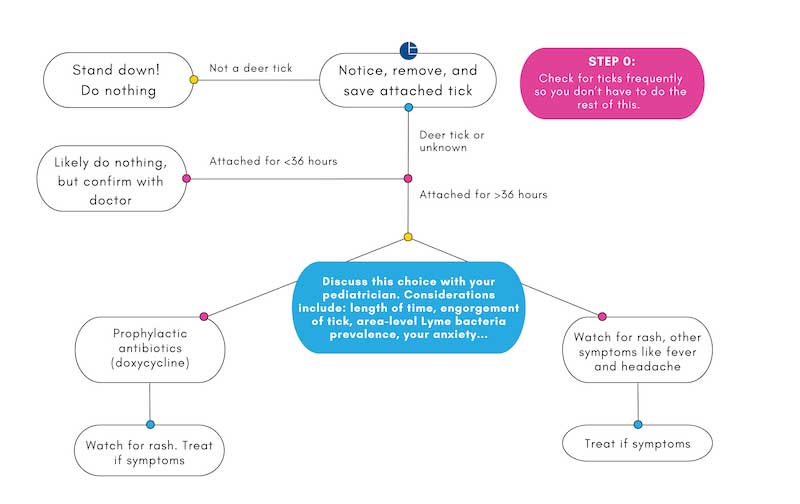What are reasonable measures to prevent Lyme disease? Are DEET or Permethrin safe for toddlers over two? What bug spray do I use? How do I check for ticks and how frequently do I do it?
—AM
Ticks! The worst. This deserves a much longer discussion, so I’ll point you back to the very elaborate tick post I wrote in April of 2021. Here it is. It’s got pictures, a little flow chart, and a link to a video about dizzy ticks. A key point here is that the main thing you should do is make sure to check your children (and you!) for ticks regularly.
In terms of DEET, I noted in that article that people are concerned about the neurotoxin effect of DEET. As I said there:
In response, I give you this review article, entitled “Is DEET a Dangerous Neurotoxicant?” To which the answer (by their reporting) is “No”. The CDC and other official bodies (notably the AAP) also support the use of DEET-containing repellants, although they note that you do not need “100% DEET” and, in fact, recommend no more than 30% DEET in repellants. These recommendations are based on the fact that data doesn’t suggest DEET is a neurotoxin in normal usage.
Everyone urges some caution — you should be careful not to spray repellant at kids’ faces, or get it on their hands, or really anything in which they could ingest it. And like with sunscreen: if possible, clothing coverage is better than repellant. But DEET also works better than anything else so if you’re going to be in a very insect-infested area, it’s a reasonable choice.
I will note that I also followed this up with a second post (about halfway down this newsletter) which covered the topic of Permethrin (yes, recommended, used constantly in my house now) and also fixed my original error of not including the Brad Paisley song “Ticks” in the original post.
Hopefully, between those two reads, you’ll get some solace!


















